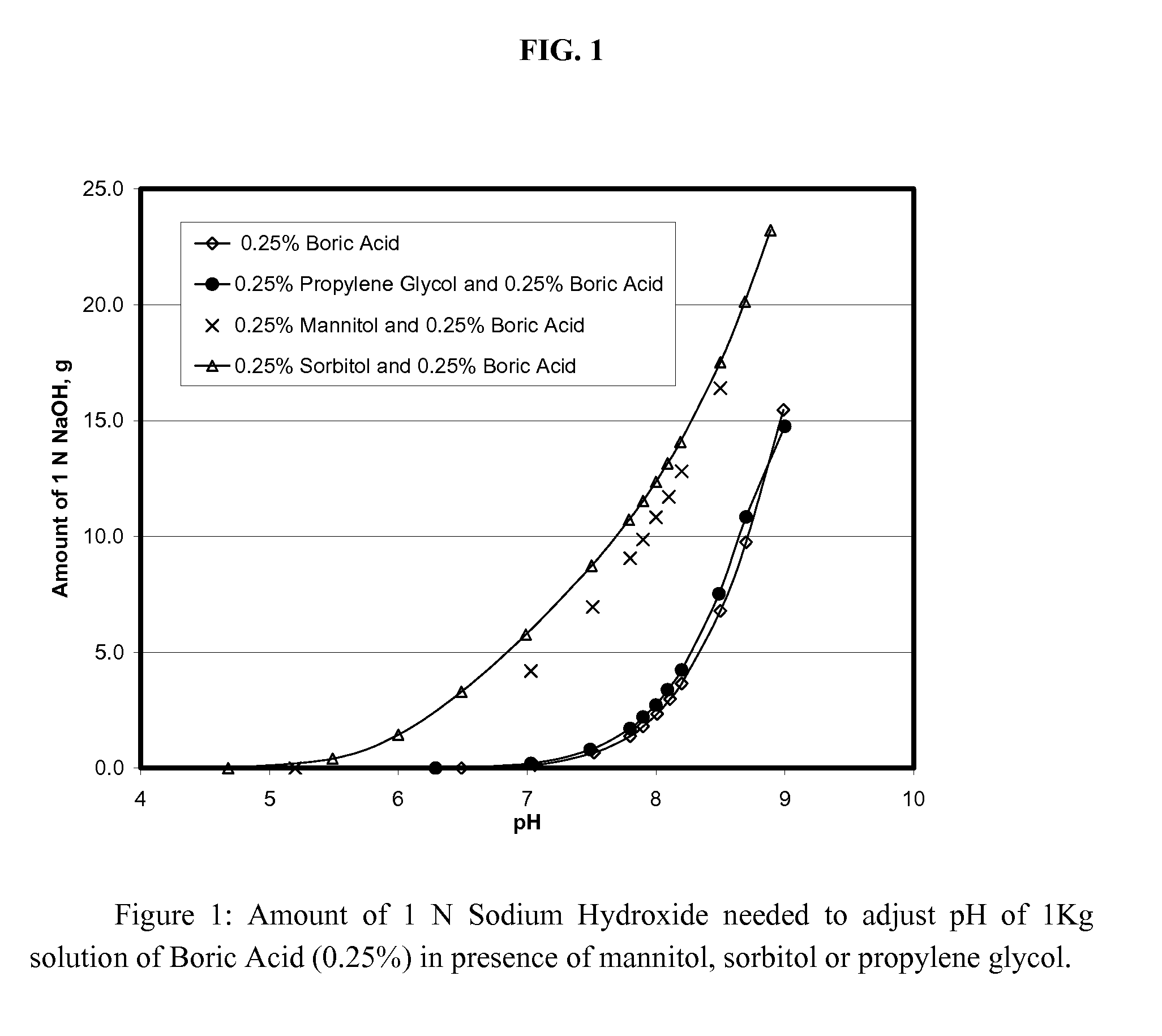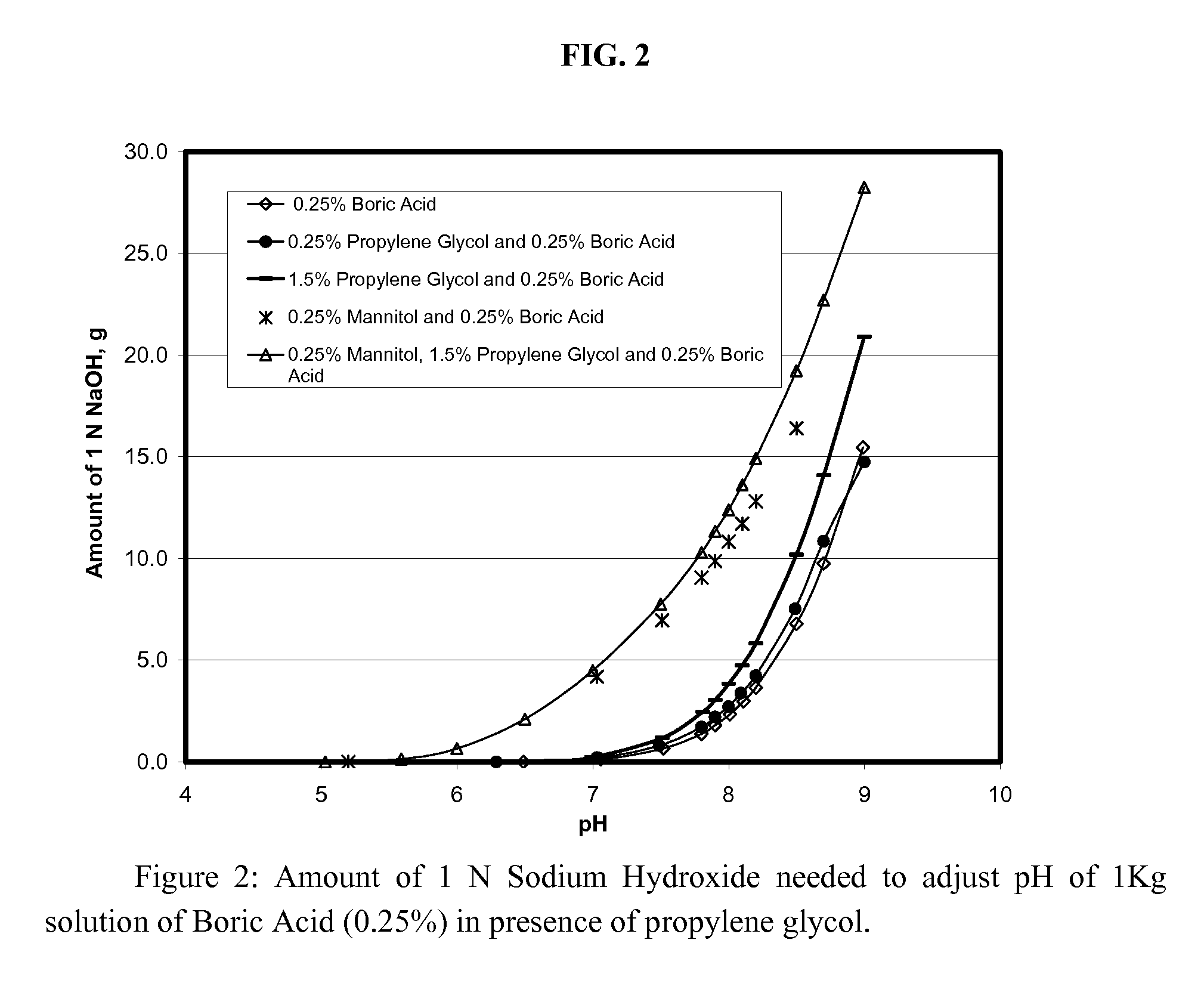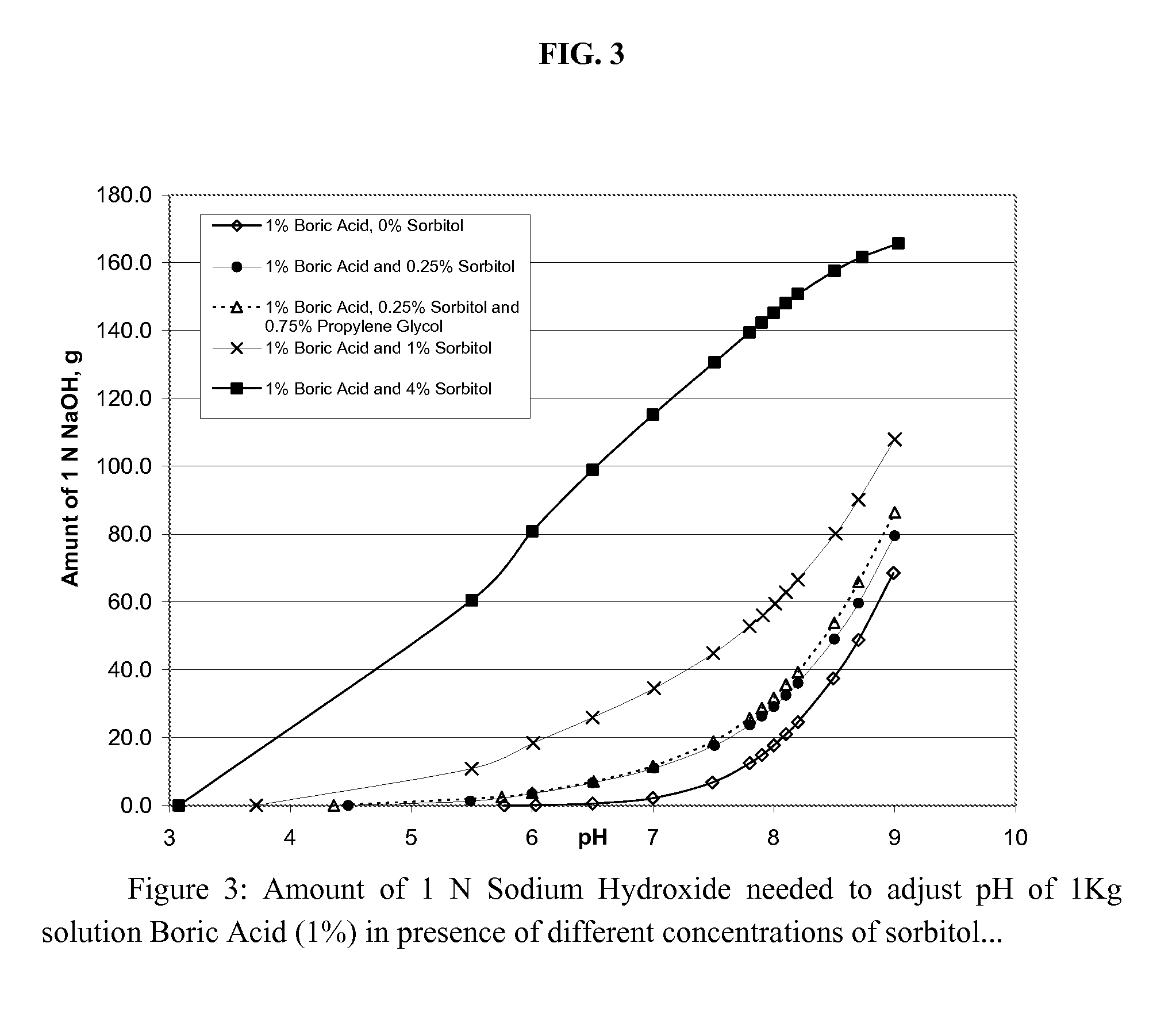Self preserved aqueous pharmaceutical compositions
a composition and self-preserving technology, applied in the field of self-preserving pharmaceutical compositions, can solve the problems of compromising the sterility of the product, difficult to achieve the balance of anti-microbial efficacy and the potential toxicological effects of anti-microbial preservatives, etc., to achieve the effect of preventing microbial contamination and enhancing antimicrobial activity
- Summary
- Abstract
- Description
- Claims
- Application Information
AI Technical Summary
Benefits of technology
Problems solved by technology
Method used
Image
Examples
examples a-e
[0079] The formulations of Examples A-E were evaluated to determine the effect of buffering anions on preservative efficacy. As discussed in greater detail below, the formulations of Examples A and B do not contain buffering agents. Although these formulations satisfied the USP preservative efficacy requirements, the presence of a buffering system is highly desirable, so as to prevent pH drift over the life of a commercial product (i.e., a period of up to two years or more). The formulation of Example C include a borate / polyol buffering system, but the system has minimal buffering capacity. As with the formulations of Examples A and B, the formulation of Example C satisfied the USP requirements. The formulations of Examples D and E contain significantly greater concentrations of buffering agents and consequently a higher buffering capacity. However, the relatively large amount of buffering anions present resulted in a failure of the formulations to satisfy preservative efficacy requ...
examples f through
J
[0084] In these examples, the amount of sorbitol was reduced to 1%, while keeping the boric acid concentration at 1%, in order to reduce the concentration of buffering anionic species. In addition, examples G, I, and J contain 0.75% propylene glycol. All five examples have an anionic buffer concentration of about 19 mM.
[0085] The compositions of Examples F and G contain 0.18 mM of zinc. These have much better anti-microbial activity against S. Aureus than the formulations of Examples D and E, above. Specifically, the compositions of Examples F and G meet USP preservation criteria for S. aureus. However, although the antimicrobial activity against E. coli at zinc concentrations of 0.18 mM (Examples F and G) and 0.36 mM (Example H and I) is improved, compared to examples D and E, it is not sufficient to consistently meet USP preservation criteria at day 14. Increasing the zinc concentration to 1.8 mM (Example J) improved the antimicrobial activity of the solution, so as to allow it ...
examples o
AND P
[0088] In these examples, the amount of boric acid was reduced. The formulations meet USP preservation criteria and are representative of the compositions of the present invention.
ExampleOPFID107519107520Lot Number04-3744204-37443IngredientConcentration (w / v %)Travoprost0.0040.004Polyoxyl 400.50.5HydrogenatedCastor Oil(HCO-40)Zinc Chloride0.00250.0025Boric Acid0.30.15Sorbitol0.250.125Propylene Glycol1.61.6SodiumAdjust pH to 6.0Adjust pH to 6.0Hydroxide, and / orHydrochloric AcidPurified WaterQS 100%QS 100%Osmolality281247Sodium Hydroxide conc.2.2 mM0.5 mMMonovalent cation2.2 mM0.5 mM(Na) conc. neededto adjust pH ofbuffering anionsMicroorganismLog Order Reductions 7 D4.95.014 D4.95.028 D4.95.0 7 D5.05.014 D5.05.028 D5.05.0 7 D5.15.114 D5.15.128 D5.15.1 7 D0.30.214 D0.91.028 D1.52.0 7 D2.62.614 D3.02.328 D3.72.6
EXAMPLES Q AND R
[0089] The preservation of formulations containing 0.18 mM zinc (0.0025% zinc chloride), with or without boric acid. was evaluated. The results show that ...
PUM
| Property | Measurement | Unit |
|---|---|---|
| osmolality | aaaaa | aaaaa |
| time | aaaaa | aaaaa |
| time | aaaaa | aaaaa |
Abstract
Description
Claims
Application Information
 Login to View More
Login to View More - R&D
- Intellectual Property
- Life Sciences
- Materials
- Tech Scout
- Unparalleled Data Quality
- Higher Quality Content
- 60% Fewer Hallucinations
Browse by: Latest US Patents, China's latest patents, Technical Efficacy Thesaurus, Application Domain, Technology Topic, Popular Technical Reports.
© 2025 PatSnap. All rights reserved.Legal|Privacy policy|Modern Slavery Act Transparency Statement|Sitemap|About US| Contact US: help@patsnap.com



